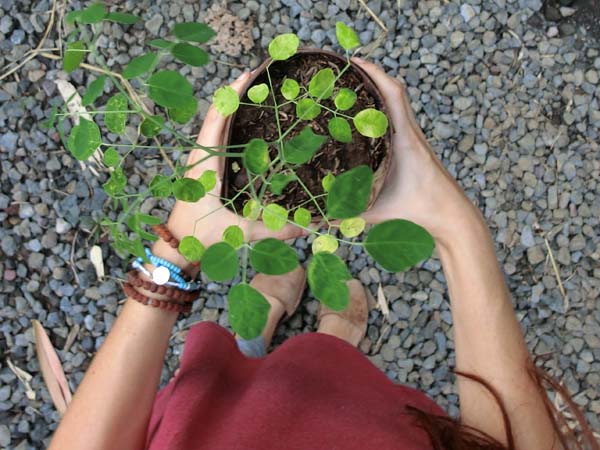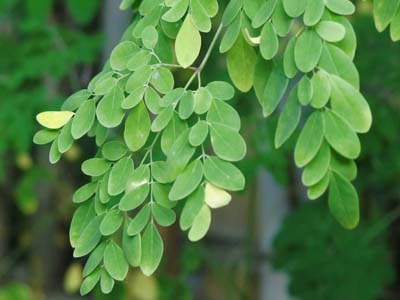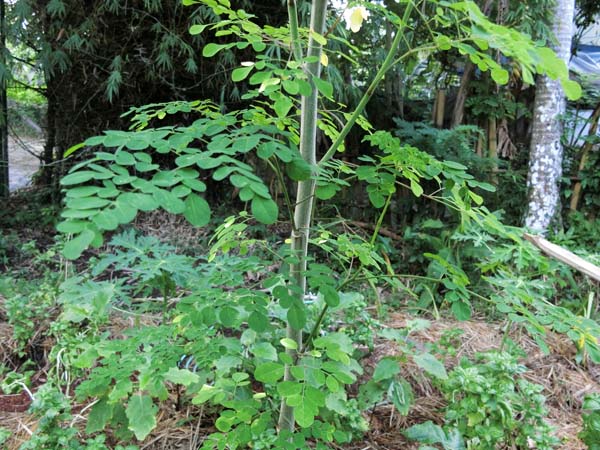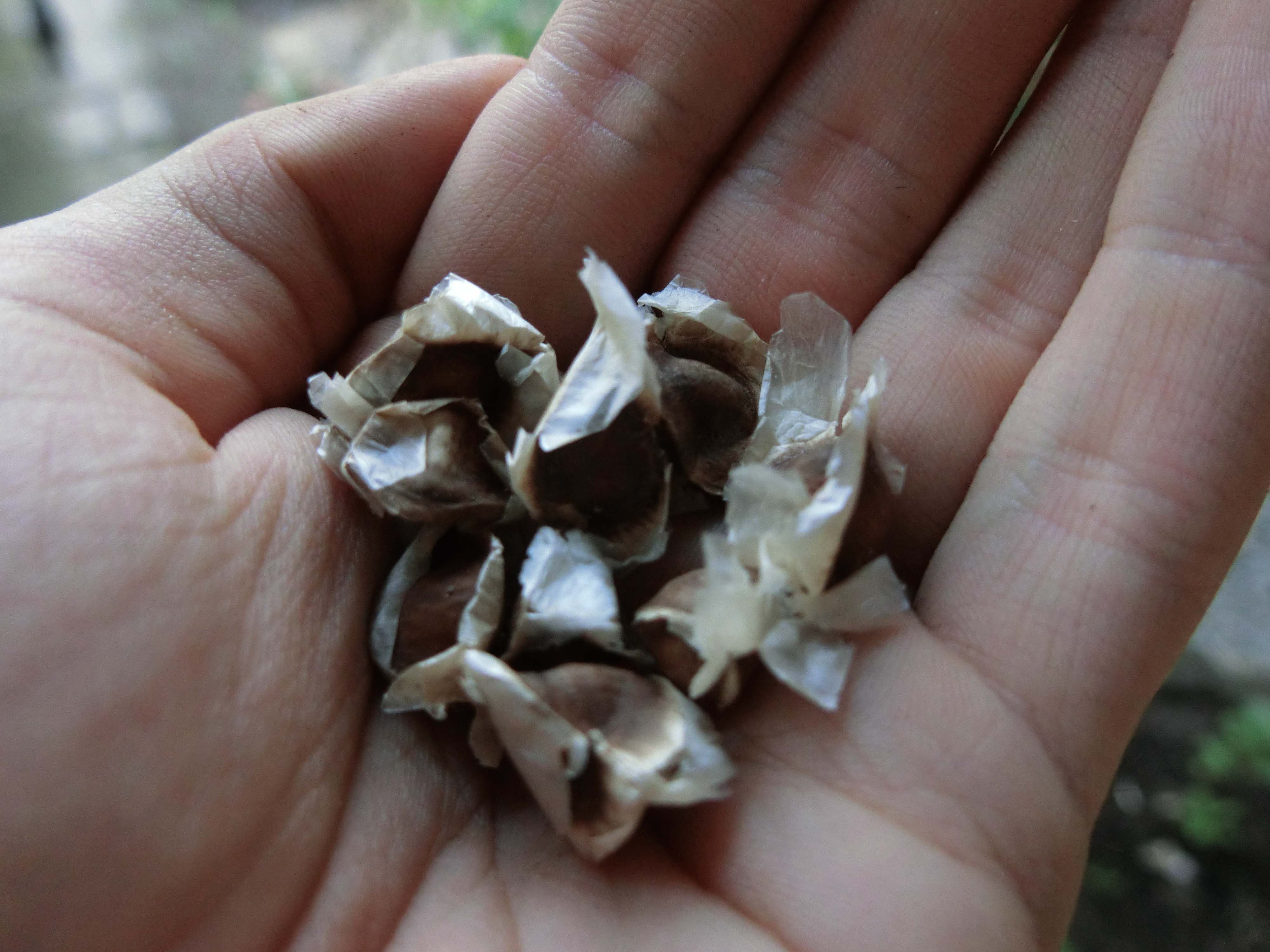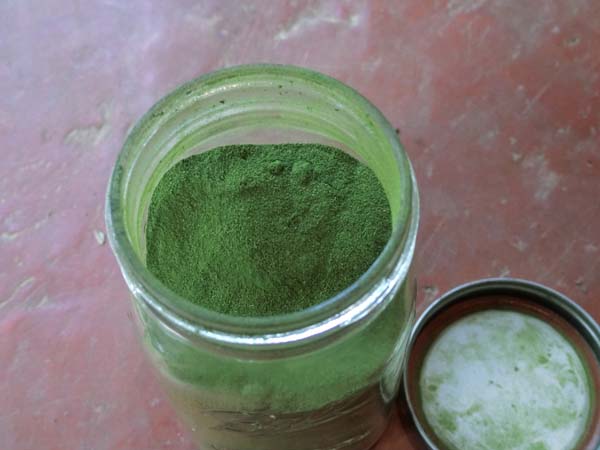The health conscious are all raving about the benefits of this miraculous tree. In Bali its called Kelor, it grows like a weed and the Balinese have been using it forever. Now Moringa’s fame has found its way from East to West; in health stores, raw food cafes and in breakfast smoothies everywhere. So what is it about this scraggly looking tree?
I’m halfway through reading a book called “Moringa: Nature’s Medicine Cabinet” by Sanford Holst and so far it is seeming like Moringa is our answer to almost all diet deficiencies. According to Holst it strengthens bones, enriches anemic blood and enables a malnourished mama to nurse her starving baby. For decades northern indians and africans have used Moringa Oleifera to cure diabetes, intestinal worms, inflammations fever, epilepsy, listeria, to skin infections, toothaches, snakebites and a whole list of varying diseases. It has also been used to purify river water for drinking.
The Juicy Facts:
Moringa leaves contain around 40% protein, with all of the 9 essential amino acids present in various amounts. It is considered to have the highest protein ratio of any plant so far studied on earth. The protein quality and quantity is said to be similar to soy beans, but there are no reports of Moringa triggering allergies as soya does. Moringa’s leaves, pods and flowers have seven times the Vitamin C found in oranges, four times the Vitamin A of carrots, three times the iron of spinach, four times as much calcium as milk and three times the potassium of bananas…. all I have to say is… Lets grow some Moringa!!!
Growing Moringa:
We got our Moringa seeds from a mature tree on the farm but they should be pretty easy to find in tropical countries. Seeds should be planted an inch deep in aerated soil. Germination rate is said to be quite high, around 80%, however if you keep the seeds stored for a while your chances of germination will go down by 30%, giving your seeds only a 50% chance of sprouting into life. In other words once you get your hands on some seeds plant them immediately.
Basic requirements for growing are light, water and soil. Ideal soil is a sandy loam, and you can make a little perfect mixture by adding sawdust, rice straw, peat moss and compost. What’s also really great about this tree is that you can grow it indoors in a big pot just as long as it’s exposed to light.
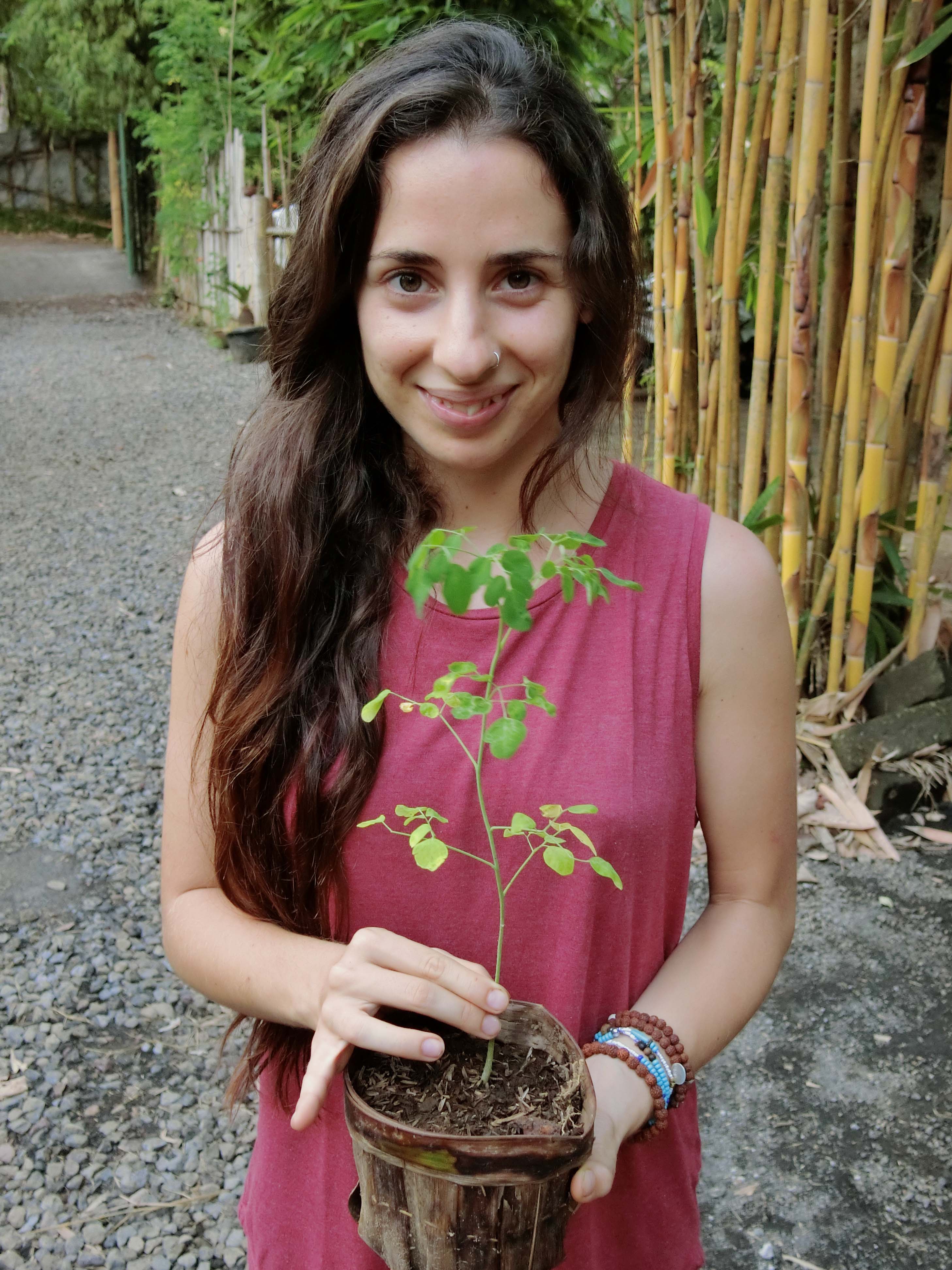
Some different ways to eat and use Moringa:
-
Make a Curry
The Balinese make a yummy aromatic curry dish called Roroban. Its leaves are boiled with bumbu Bali (the base to any balinese dish – an awesome sauce made from turmeric, ginger, peppers, garlic, shallots, lemongrass, cumin, salt and pepper) and coconut milk.
-
Turn it into leaf powder
Great for a boost in energy! Harvest the leaves, dehydrate them, grind them and turn them into leaf powder. You can use this as a sprinkle for your food or add a teaspoon to your morning juice or smoothie.
-
Brew a Moringa tea
This is apparently great for treating colds. Take some flowers from your Moringa tree, bring some water to a boil and add between 5 to 7 flowers. Let water and flowers steep for 5 minutes, add some honey to sweeten and enjoy!
Orin and I have been adding Moringa to our morning smoothies almost daily and we can definitely feel a slight increase in alertness. Consuming 1 – 2 teaspoons a day is enough, if you take too much it can make you quite nauseus.. this is powerful stuff!
If you’ve been consuming Moringa for a while let us know how you feel… changes in energy? health? We’d love to know more about the effect its had on people.
If you’re in Bali and keen to grow some Moringa yourself, we’ll soon be selling seeds, seedlings and eventually leaf powder too. Keep an eye on our online store or email [email protected] to get your hands on some of this magical goodness!

